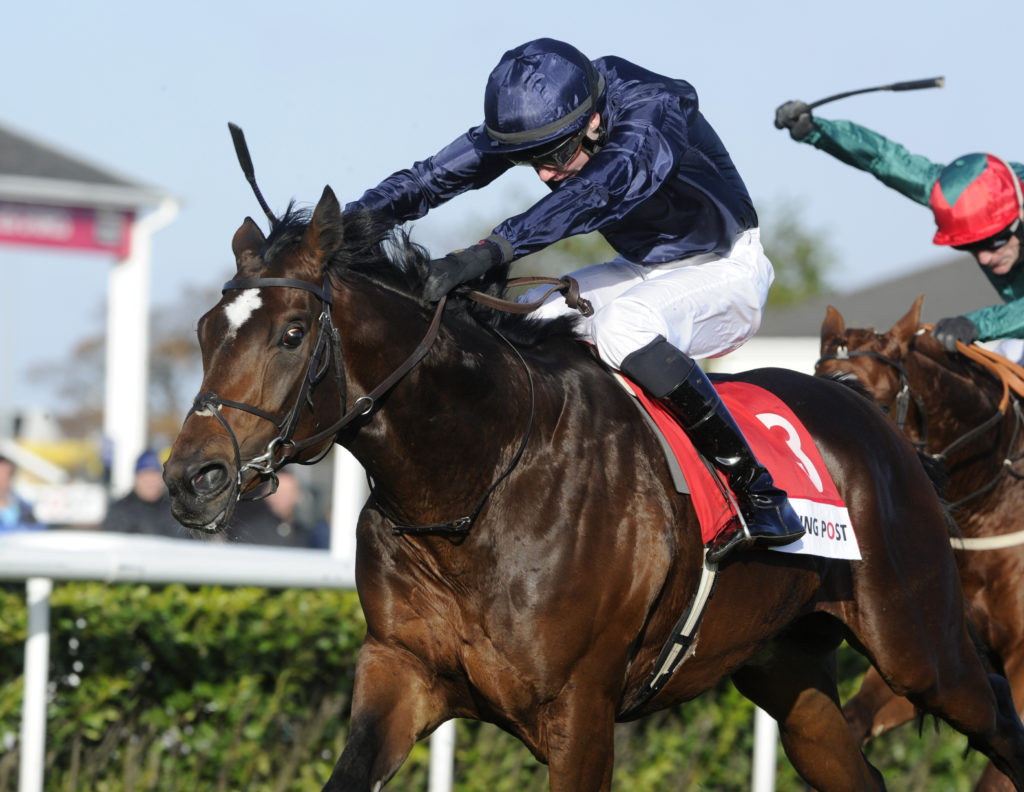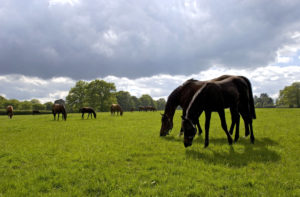Finally, we have our Guineas winners. The 2,000 Guineas was intriguing for a number of reasons, none more so than the will-he-won’t-he- train-on questions surrounding last season’s champion two-year-old Pinatubo. In the end, Pinatubo failed to reproduce his trademark quick-cadence finish and was overcome by two colts that have clearly made substantial improvement over the winter.
Timeform’s initial view of the race has the winner Kameko on 129, Wichita on 127 and Pinatubo a full nine pounds below last year’s rating of 134. Kameko was a stone adrift of Pinatubo last year despite his victory in the Vertem Futurity at Doncaster. And now rated 128, he’s already rated higher than last year’s winner Magna Grecia, with still a considerable upside to explore should he go to Epsom for the Derby.
With his current Timeform mark, Kameko is already his sire’s second-best offspring, behind the 130-rated Roaring Lion, who raced in the same Qatar colours. The fact that only three of his ten best runners have raced in Europe, tells it’s own story about the popularity of Kitten’s Joy on this side of the Atlantic.
An out-and-out turf sire with a decidedly European tinge to his pedigree ought to have attracted more attention from Europe’s major owners. Perhaps the suspicion is that the North American Grade 1 winners on turf sired by Kitten’s Joy haven’t been up to the standard of their European counterparts. Their Timeform ratings seem to corroborate this.
Kitten’s Joy reached his zenith in 2004 as a three-year-old, winning back-to-back Grade 1 races on turf – the Secretariat and Joe Hirsch Turf Classic – before finishing second to Better Talk Now in the Breeders’ Cup Turf. Rated 128 by Timeform, he’s just one pound behind his sire’s other top-class sire son Medaglia d’Oro and given the disparity of opportunity between these two sires, both in terms of aptitude and mare quality, it’s to Kitten’s Joy’s credit that he’s notched up 97 stakes winners, compared to the 112 by Medaglia d’Oro from his northern hemisphere crops.

Kameko’s dam Sweeter Still is a half-sister to Group 1 winner Kingsbarns – Photo: George Selwyn
Moreover, Kitten’s Joy’s stakes winners have come along at a very respectable rate of 8.3%, which puts him comfortably among the top 20 active sires in North America. It is also ahead of the success rate his mares have managed with all other sires. We see the same signs with his Group or Graded scorers and also in the quality of his stakes winners, which are on average one pound higher than the stakes winners from his mares but from other sires.
But the metric that probably best sums up Kitten’s Joy’s ability to produce high-class runners is his record with elite mares. It’s no surprise to learn that only 16% of his starters are from elite mares, but those 190 runners include 14.2% stakes winners.
To put that number in context, we can cite Tapit’s 16.1% or indeed Into Mischief’s 10.2%. It’s clear that with better patronage, Kitten’s Joy would have a more impressive profile and it’s no secret that his owner Kenneth Ramsey has exploited this fact when producing some of Kitten’s Joy’s best offspring.
At the time of covering, Kameko’s dam could not have been classed as an elite mare. Her first three foals by, Giant’s Causeway, Galileo and Union Rags, were all unraced, so it’s easy to see why Kameko cost only $90,000 as a Keeneland September yearling.
But that doesn’t mean Sweeter Still didn’t have the means to succeed. Sold out of Aidan O’Brien’s after finishing fourth on debut in a Listed race at two, she was a triple stakes winner over a mile on the West Coast at three, where she won the Grade 3 Senorita Stakes at Hollywood Park and was twice placed at Grade 2 level. She added a further stakes success at four and her Beyer numbers suggest a Timeform rating of around 101 or 102.
As a half-sister to Gailieo’s Racing Post Trophy winner Kingsbarns, it was no surprise to see her fetch $750,000 when she came up for sale at Keeneland January in 2014 carrying her Galileo filly Catchingsnowflakes. But the bloodstock world can be a harsh place as subsequent sale prices of $35,000 and $1,500 amply demonstrate. As the dam of the fastest-ever 2000 Guineas winner, she will never be undervalued again.



